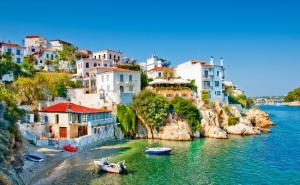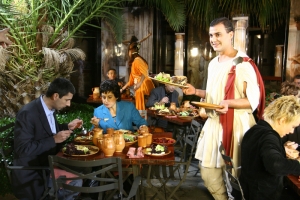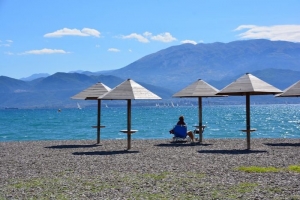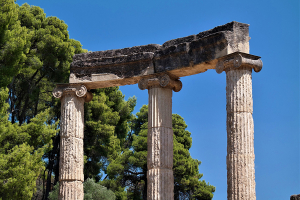Double gold distinction at the Sports Marketing Awards 2017
The Olympic “family” of “Navarino Challenge” grows and returns for a 5th consecutive year on October 13-15 2017, in Messinia and Costa Navarino.
Every year “Navarino Challenge”, honors the athletes who stand out for their overall contribution to sports. Honoree person at this year's event will be the Olympic gold medalist in Rio and world champion in the rings, Lefteris Petrounias who has made proud all Greeks not only with his successes but also with his ethics. Petrounias, is considered an exemplary athlete for young people, who has already won a gold Olympic medal, two gold medals in the world gymnastics championships, as well as four gold and one bronze in European tournaments and championships in rings.
The multiple award-winning sports tourism event of Messinia continues with new distinctions; following the Gold Ermis Award as best sports tourism event, another important recognition came at the Sports Marketing Awards 2017, which highlight the best practices in the marketing and communication of the Greek sports market.
On Wednesday, July 12, “Navarino Challenge” remained in the top level by winning not just one, but two gold awards. In particular, the event received a gold award at the “Sports Events / Branded Events” section, in the category “Live Well” for the values promoted through its program of activities. As an event that attracted thousands of participants, reinforced the local community, promoted the athletic ideal and contributed to the strengthening of a healthy lifestyle, distinguishing itself in terms of design, creativity, innovation, efficiency and effectiveness.
The second gold award was received in the “Sports Brands” section of the “Integrated Marketing Campaign” category for the best communication and marketing campaign launched in 2016, in the light of strong creativity, ingenuity, originality and excellence.
“Navarino Challenge”, which takes place in Costa Navarino and throughout Messinia, is innovating every year and now composes not only the event with the most sports activities but also with the most Olympic sports, contributing to the promotion of sports and the promotion of Greek tourism.
Registrations for “Navarino Challenge” continue with an undiminished pace and everyone can take part by completing the special entry form available by clicking
here.
Participants may select to run in one of the following routes, the exquisite Half Marathon (21,1km), the 10 km route and the 5km run (for running and dynamic walking), while at the same day children may run the 1km running route. This year, there will be race timing for all runners. In addition, participants will have the opportunity to swim in the beautiful Navarino bay at the picturesque port of Pylos, covering the unique swimming route of one mile (1.6 km.) and take part in the Stand Up Paddling race by BIC® Sport that will be held with the support of the best surf club, Surf Salad!
Travel to “Navarino Challenge” with the multiple award-winning airline company Qatar Airways, by using the promo code ATHNAVCH to book an exclusive offer for roundtrip tickets to Athens from over 150 places, by clicking
here!Offer is valid from 3 to 15 October 2017 included (Outbound) and (Inbound) to be completed on or before 25 October 2017. This offer refers to roundtrip tickets to Athens from more than 150 destinations. Participants should be ready for even more surprises to be announced by the official airline partner of the event.
In addition, Vikos company will support and refresh for one more year the audience and participants of the event with the Natural Mineral Water "Vikos", while ambassadors and organizers will move with the safety of the cars of Ford Motor Hellas.
The privileged accommodation packages at The Westin Resort Costa Navarino are available for those wishing to enjoy the full schedule of “Navarino Challenge”, which includes more than 10 free sports activities. For further information click
here!
“Navarino Challenge” will be held under the Auspices of the Greek National Tourism Organization with the support of Costa Navarino and The Westin Resort Costa Navarino, as well as the Municipalities of Pylos-Nestor and Trifilia.
More information will be announced in the next few weeks.
Website
Facebook
Twitter YouTube ChannelInstagram Hashtags: #navarinochallenge #costanavarino #eatwell #runwell #livewell
Photo: Greek Olympic gold medalist and world champion in the rings, Lefteris Petrounias will be the honoree person of "Navarino Challenge"
Official Airline Partner: Qatar Airways
Official Sponsors: “Vikos” Natural Mineral Water, Ford Motor Hellas
Official Supporters: BIC®, BIC® Sport, Wyndham Grand Athens, Poseidonia, Surf Salad
Assisted by: Navarino Outdoors, Swim Academy, Navarino Racquet Academy, Apia
Strategic Partner: National Geographic
Under the auspices of the Greek National Tourism Organization











